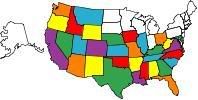Recently, I have been going out early Sunday for a ride, ideally before 7 am when others are still in bed, mainly to avoid traffic here in Los Angeles. I include the Santa Monica Mountains for some practice on curves but nothing like the roads around Rock Store. Still getting the miles in to improve my skills, after having returned to riding over a year ago after decades of not being on a bike. The rides are usually nice, and gives me a chance to practice various techniques.
Was on a new road for me, and encountered a few sharp downhill curves whose tightness I did not fully anticipated. On one right curve, was probably going too fast, but felt very iffy while countersteering and giving some throttle. Gravity was already pulling, rear wheel felt light, and there was a car to my left. I did make it through, leaning perhaps the most I have since returning to riding, although in my youth, I regularly scraped the pegs. At the bottom, I knew that I needed more skills to better anticipate and to make it through when things become more challenging than expected.
So, what advice you you have on downhill curves, which already transfer weight to the front wheel? Things I should practice and consider?
.png)



 not In.
not In. since hard leans means your on your toes on the Foot Pegs (can't reach Rear Brake Foot Lever).
since hard leans means your on your toes on the Foot Pegs (can't reach Rear Brake Foot Lever).

Comment